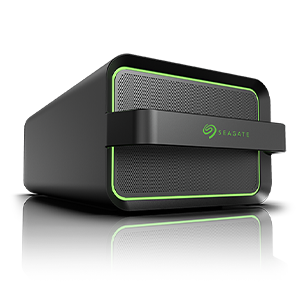Optimizing storage architecture is critical for ensuring that IT infrastructure meets the evolving demands of scalability, performance, and fault tolerance at scale—without breaking the bank.
While specific storage configurations vary depending on corporate needs and use cases, two frameworks are fundamental: JBOD (just a bunch of disks) and RAID (redundant array of independent disks). Here is a primer on the basics of JBOD and RAID, along with advice on the best deployment options for your data center.
JBOD Basics
JBOD configurations leverage multiple disk drives inside a single enclosure to create a simple, consistent storage architecture.
Under a JBOD framework, hard drives function independently or are merged to create a larger, spanned volume using a volume manager. While JBOD lacks inherent support for storage redundancy, spanned volumes provide no inherent redundancy. Redundancy is achieved through software-defined storage solutions or file systems at a higher level.
Benefits of JBOD Include:
- JBOD can be configured to combine all drives, or some drives, as a single storage space.
- Each drive can also be accessed independently.
- JBOD can support different disk capacities within the same enclosure.
- Scaling is straightforward—simply add another drive.
Potential JBOD Drawbacks:
- No intrinsic support for storage redundancy within the JBOD framework.
- Whether one drive or multiple drives fail, all data on drives may be lost.
Flash storage is now emerging as an additional JBOD option, although it presents a higher price point for equivalent capacity.
RAID Essentials
Also known as a “redundant array of independent disks”, RAID frameworks merge the available space on multiple hard disks or solid-state drives within a single enclosure to limit risking data loss. Data is distributed across the drives in multiple ways and is referred to as RAID levels, depending on the desired balance of redundancy and performance. For instance, RAID 1 provides complete disk mirroring for full duplication of all data while RAID 5 uses data striping to improve data access speed and distribute parity bits across the disks, enabling the RAID to rebuild lost data if one drive fails. However, not all RAID levels offer redundancy, such as RAID 0. These drives are managed by a hardware- or software-level RAID controller.
Advantages of RAID Include:
- RAID considers all connected drives as a single storage device.
- The user can choose among several RAID levels, depending on their needs for greater data redundancy versus higher performance.
- Using lower-priced HDDs or SDDs can reduce total cost of ownership (TCO).
Potential RAID Pitfalls:
- For optimal performance in a RAID array, it's recommended that all disk drives be of the same capacity and type.
- Failed drives may require substantial time to rebuild due to today's high data densities and capacities.
- Proactive maintenance is needed to ensure multiple failures don't render storage arrays useless.
Nested RAID configurations that combine the features of specific RAID levels can also be utilized. One popular configuration is RAID 1+0 (also known as RAID 10), requiring a minimum of four drives. In RAID 10, data is mirrored and striped, offering higher performance and redundancy.
Making the JBOD vs. RAID Decision
Both JBOD and RAID deployments offer storage architecture advantages. RAID is a mature, highly developed technology that delivers both data redundancy and increased performance in specific configurations. JBOD solutions are easier to deploy across global data centers. and are utilized today to increase protection offered by software-defined storage systems that provide data defense.
Ultimately, the best fit for each data center depends on its workload and the organization's capacity for IT management. It's also possible to harness the strengths of both RAID and JBOD in tandem. In such scenarios, RAID arrays provide enhanced performance and data protection while JBOD solutions act as an additional layer of data backup for less critical data.
Dive deeper to learn about Seagate JBOD and RAID platforms with our Data Done Right on-demand webinar.







